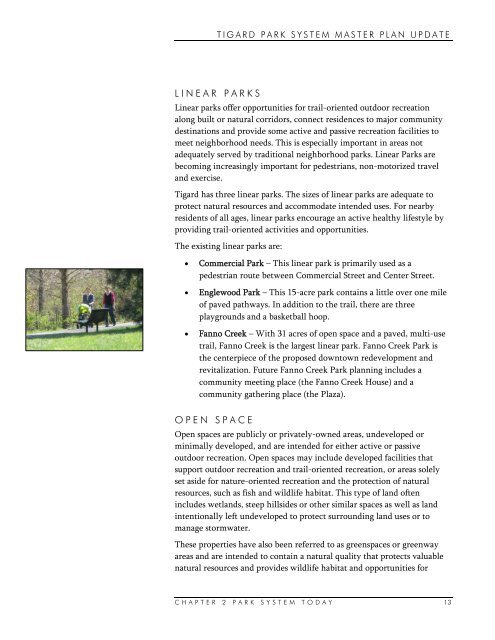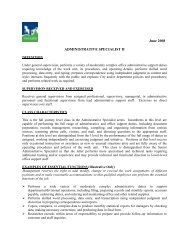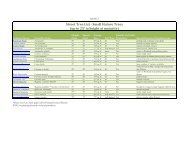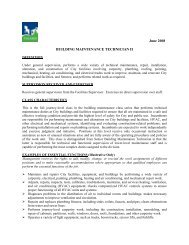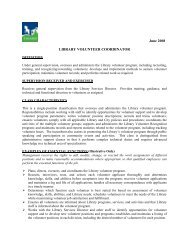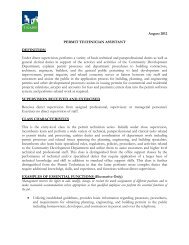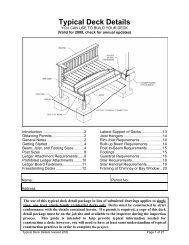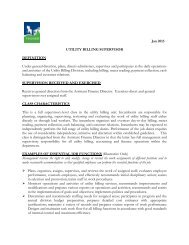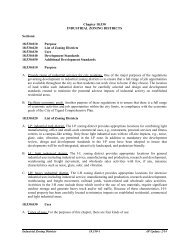Tigard Park System Master Plan - City of Tigard
Tigard Park System Master Plan - City of Tigard
Tigard Park System Master Plan - City of Tigard
Create successful ePaper yourself
Turn your PDF publications into a flip-book with our unique Google optimized e-Paper software.
TIGARD PARK SYSTEM MASTER PLAN UPDATELINEAR PARKSLinear parks <strong>of</strong>fer opportunities for trail-oriented outdoor recreationalong built or natural corridors, connect residences to major communitydestinations and provide some active and passive recreation facilities tomeet neighborhood needs. This is especially important in areas notadequately served by traditional neighborhood parks. Linear <strong>Park</strong>s arebecoming increasingly important for pedestrians, non-motorized traveland exercise.<strong>Tigard</strong> has three linear parks. The sizes <strong>of</strong> linear parks are adequate toprotect natural resources and accommodate intended uses. For nearbyresidents <strong>of</strong> all ages, linear parks encourage an active healthy lifestyle byproviding trail-oriented activities and opportunities.The existing linear parks are:Commercial <strong>Park</strong> – This linear park is primarily used as apedestrian route between Commercial Street and Center Street.Englewood <strong>Park</strong> – This 15-acre park contains a little over one mile<strong>of</strong> paved pathways. In addition to the trail, there are threeplaygrounds and a basketball hoop.Fanno Creek – With 31 acres <strong>of</strong> open space and a paved, multi-usetrail, Fanno Creek is the largest linear park. Fanno Creek <strong>Park</strong> isthe centerpiece <strong>of</strong> the proposed downtown redevelopment andrevitalization. Future Fanno Creek <strong>Park</strong> planning includes acommunity meeting place (the Fanno Creek House) and acommunity gathering place (the Plaza).OPEN SPACEOpen spaces are publicly or privately-owned areas, undeveloped orminimally developed, and are intended for either active or passiveoutdoor recreation. Open spaces may include developed facilities thatsupport outdoor recreation and trail-oriented recreation, or areas solelyset aside for nature-oriented recreation and the protection <strong>of</strong> naturalresources, such as fish and wildlife habitat. This type <strong>of</strong> land <strong>of</strong>tenincludes wetlands, steep hillsides or other similar spaces as well as landintentionally left undeveloped to protect surrounding land uses or tomanage stormwater.These properties have also been referred to as greenspaces or greenwayareas and are intended to contain a natural quality that protects valuablenatural resources and provides wildlife habitat and opportunities forCHAPTER 2 PARK SYSTEM TODAY 13


